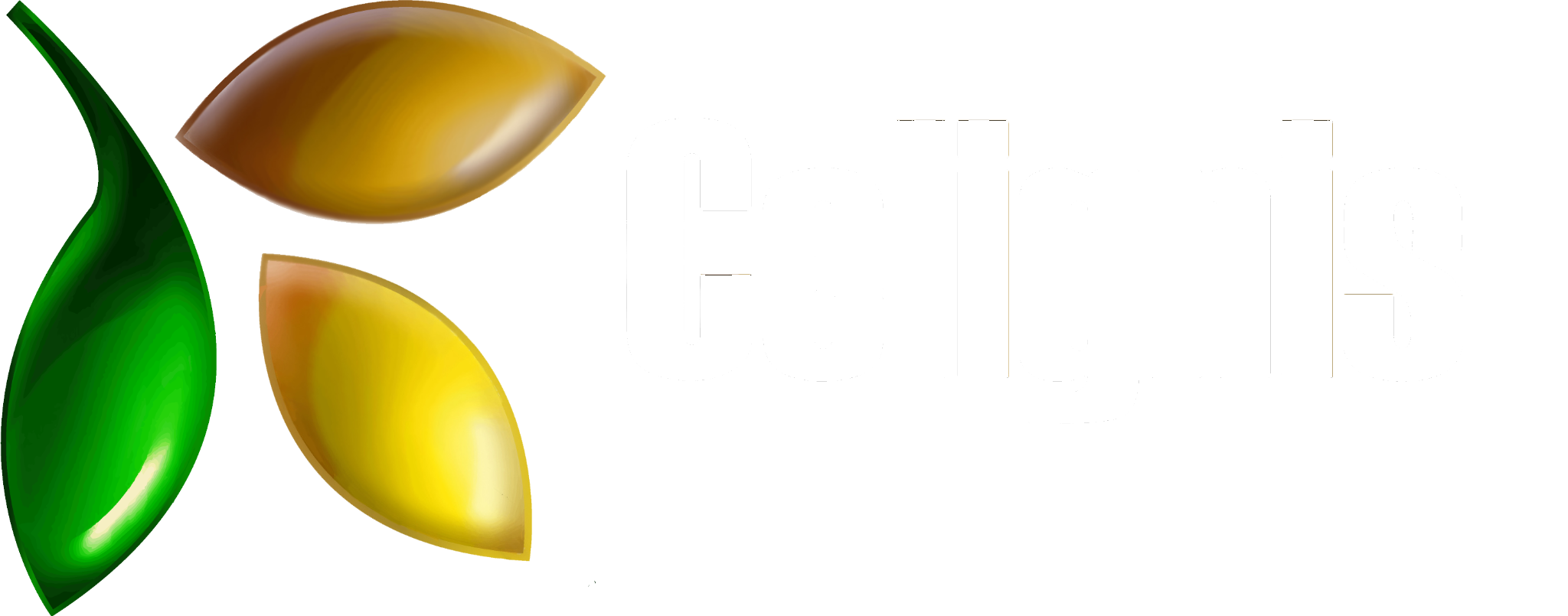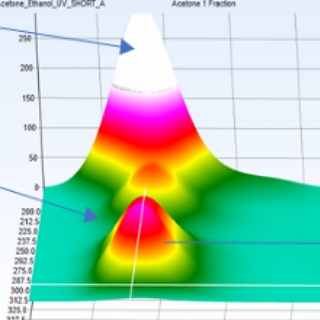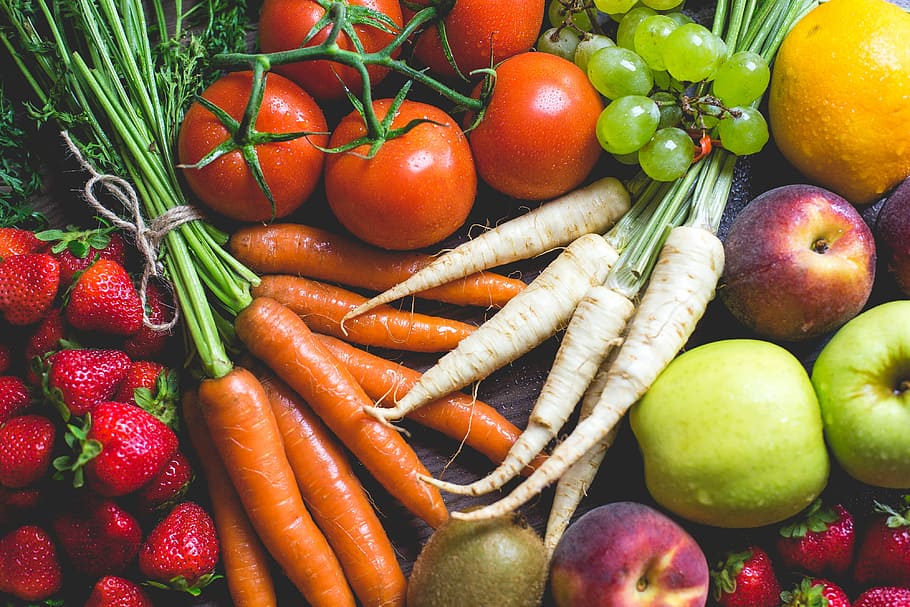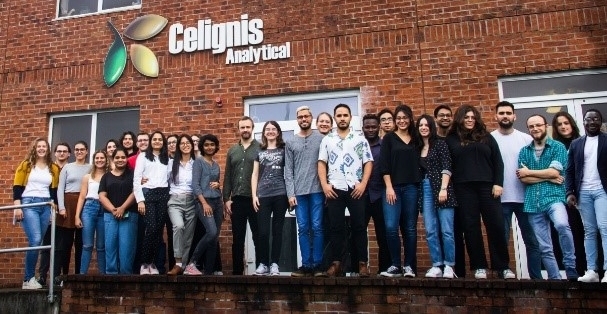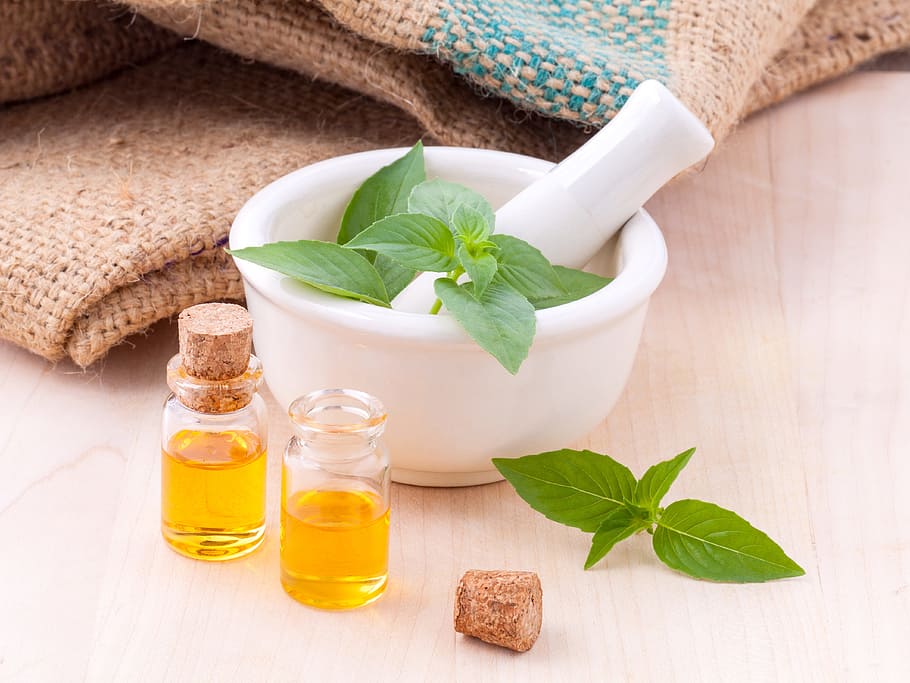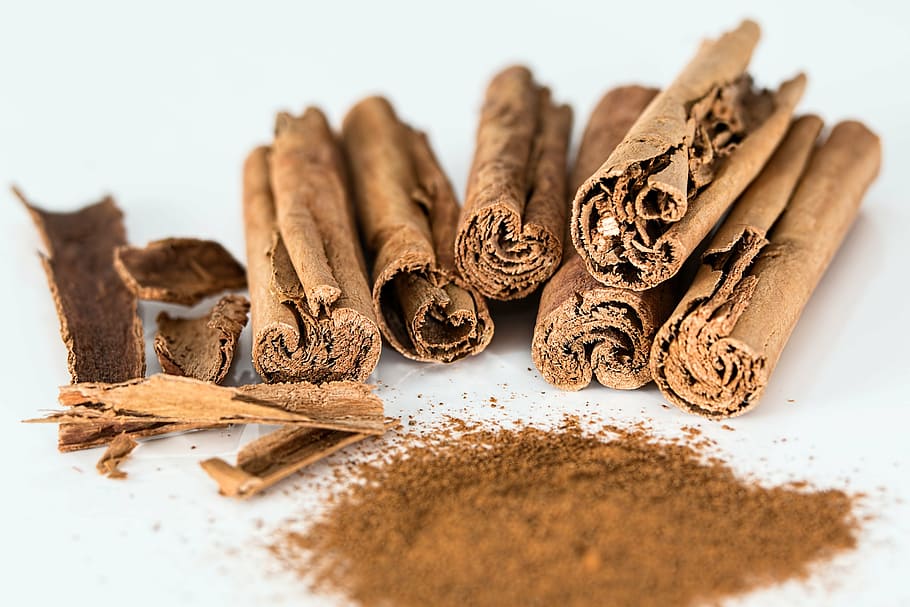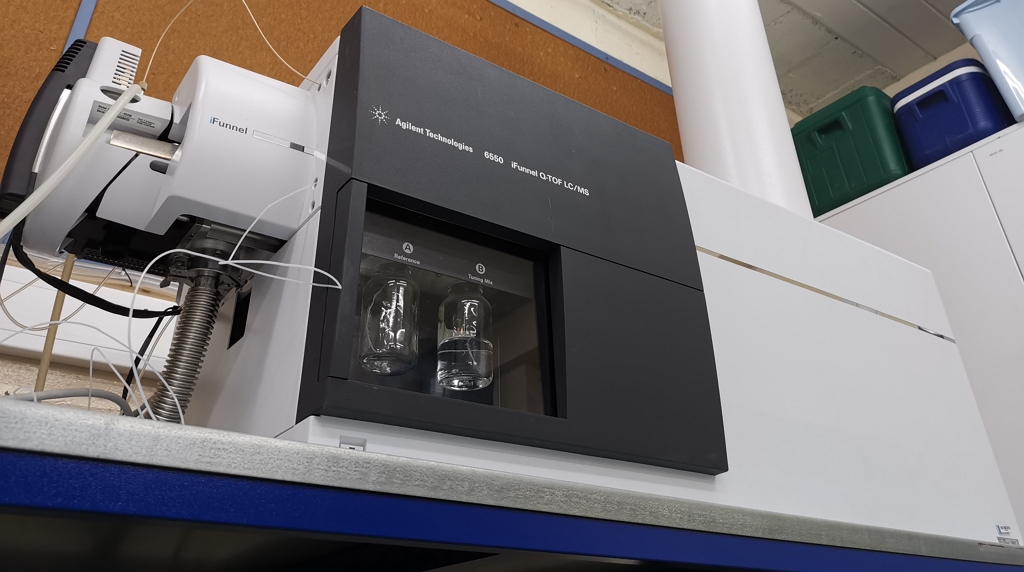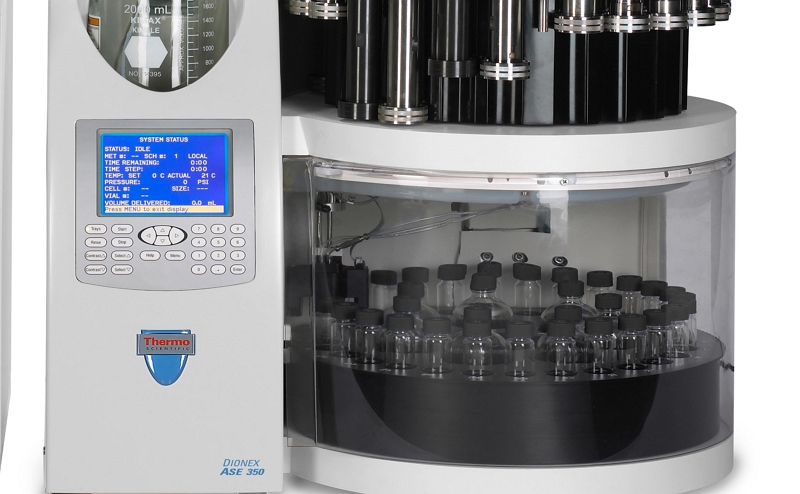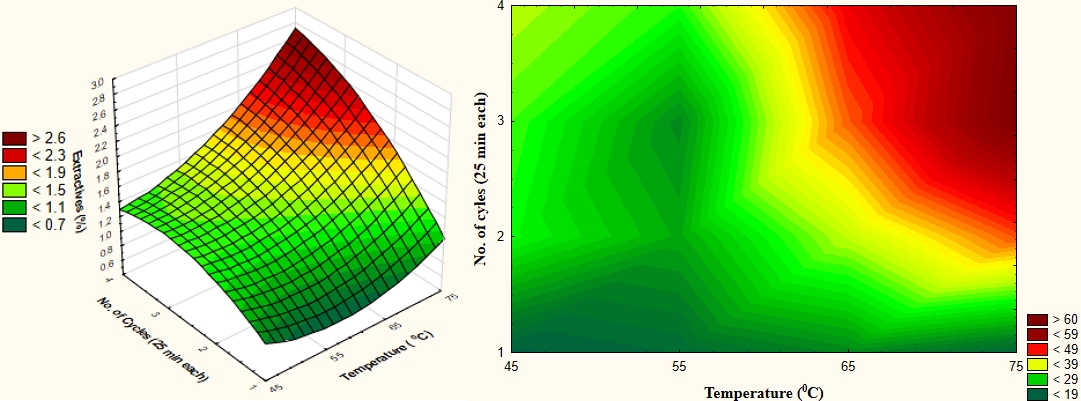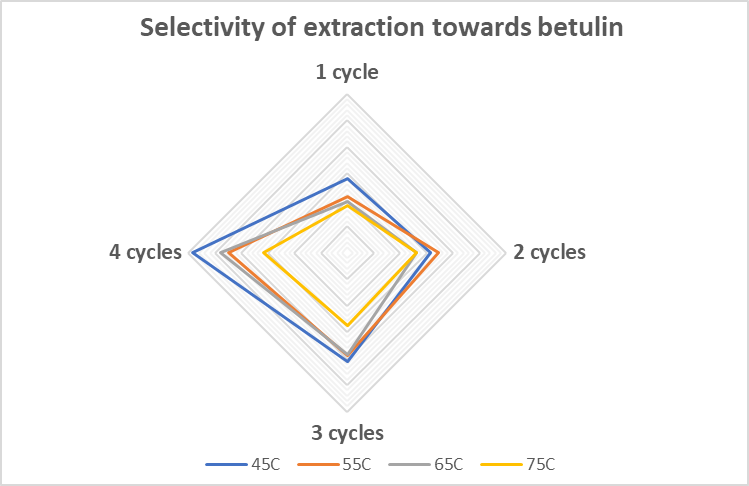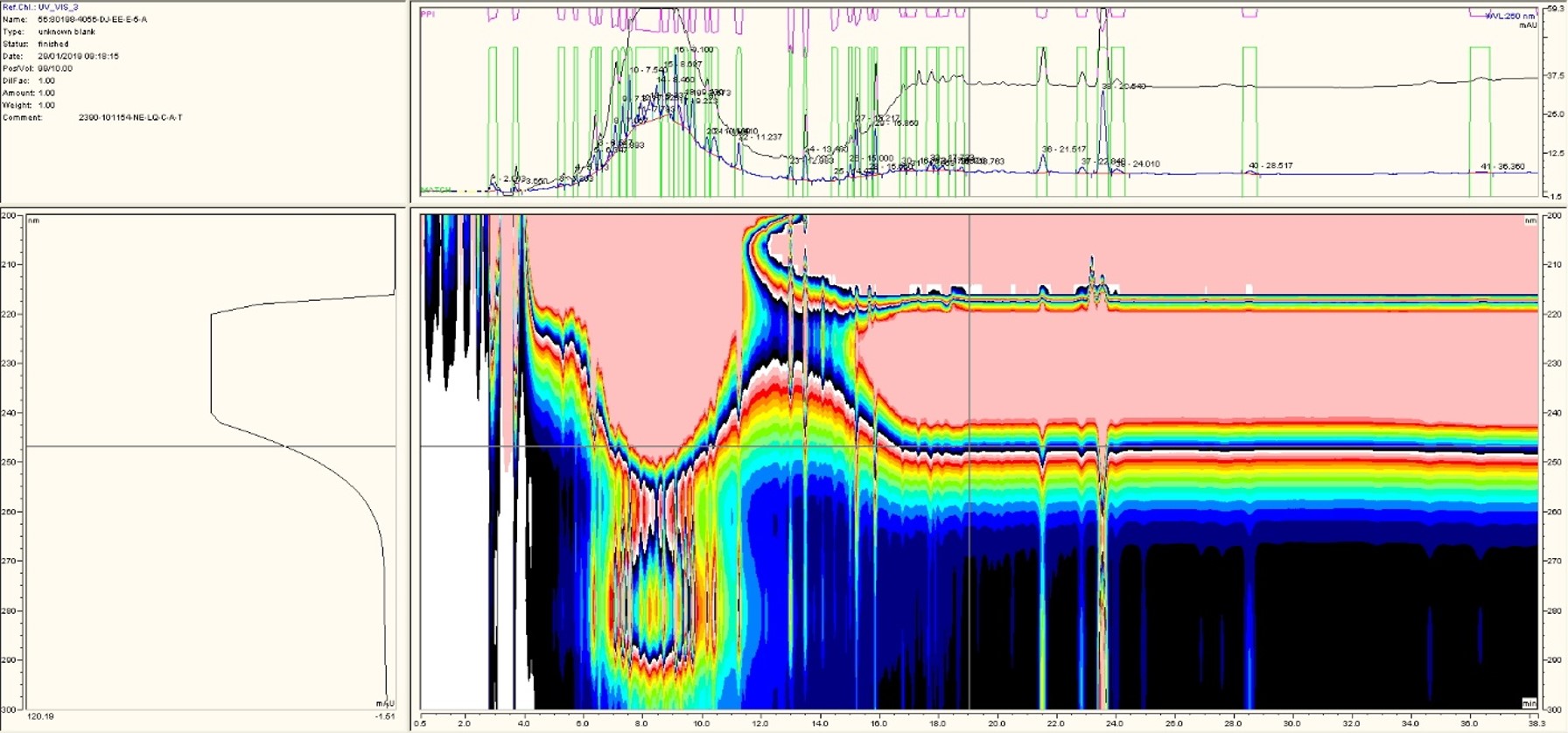Processes for the Extraction of Bioactives from Fruits and Vegetables
Background
Many bioactives and other high-value plant constituents can be considered to be a part of the biomass extractives, which are defined as extraneous components that may be separated from the insoluble cell wall material by their solubility in water or neutral organic solvents.
Click here to learn more about the ways in which bioprocesses can be developed to efficiently and sustainably extract these extractives from biomass, with particular selectivity towards the bioactives and chemicals of interest.
Get more info...Extraction Processes
Bioactives in Fruits and Vegetables
Some fruit skins (e.g. from citrus, pomegranate and berries) are widely known for their anti-oxidant and anti-microbial properties.
The pulp and seeds of vegetables (rich sources of vitamins, minerals, fibre, and phenolics) have anti-tumorigenic, anti-microbial, anti-oxidant, anti-inflammatory, anti-ageing, immunomodulatory, and wound healing properties.
Further Info on Classes of Bioactives in Fruits and Vegetables
Examples of some tocopherols found in fruits and vegetables are listed below:
- Alpha-tocopherol - The most active form of vitamin E in the human body, it is found in a variety of fruits and vegetables but is especially rich in wheat germ oil, sunflower oil, and safflower oil.
- Beta-tocopherol - Less prevalent in our diet compared to alpha-tocopherol. It is found in some oils, such as corn and soybean.
- Gamma-tocopherol - The most common form of vitamin E in the American diet, largely due to its presence in soybean, corn, and canola oil, which are common in the typical Western diet.
- Delta-tocopherol - Present in certain oils.
Get more info...Tocophenols
Examples of some carotenoids found in fruits and vegetables are listed below:
- Beta-Carotene - This is the most common type of carotenoid and the most well-known provitamin A carotenoid. It gives carrots, sweet potatoes, spinach, and kale their orange or dark green colour.
- Alpha-Carotene - Similar to beta-carotene, alpha-carotene is also a provitamin A carotenoid. It is found in similar foods to beta-carotene, including carrots, pumpkins, and winter squashes.
- Lutein and Zeaxanthin - These carotenoids are found in colourful foods like corn and oranges. Lutein and zeaxanthin are beneficial for eye health and are the only carotenoids found in high concentrations in the retina of the eye.
- Lycopene - Known for giving tomatoes their red colour, lycopene is also found in watermelons, pink grapefruits, and apricots. It is a powerful antioxidant and has been linked to heart health and cancer prevention.
- Beta-Cryptoxanthin - Another provitamin A carotenoid, beta-cryptoxanthin, gives oranges, papayas, and peaches their orange colour.
Get more info...Carotenoids
Examples of some fruits and vegetables that contain betalains are given below:
- Beets - One of the richest sources of betalains, especially betacyanins, which give them their characteristic deep red color. Beets also contain betaxanthins.
- Swiss Chard - Both the red and yellow varieties of Swiss chard contain betalains. Red Swiss chard is rich in betacyanins, while yellow Swiss chard contains betaxanthins.
- Prickly Pear - lso known as cactus fruit, prickly pears contain both betacyanins and betaxanthins. The exact amount and type depend on the variety, with red-purple varieties containing more betacyanins and yellow-orange varieties containing more betaxanthins.
- Pitahaya (Dragon Fruit) - This tropical fruit, especially the red-fleshed variety, contains betacyanins.
- Golden Beets - These contain betaxanthins, which provide their yellow color.
- Rhubarb - The red stalks of rhubarb contain betacyanins.
Get more info...Betalains
Examples of some fruits and vegetables containing anthocyanins are listed below:
- Berries - Berries, including blueberries, raspberries, blackberries, and cranberries, are some of the richest sources of anthocyanins.
- Cherries - Both sweet and tart cherries contain anthocyanins, with tart cherries having particularly high levels.
- Red and Purple Grapes - The skin of red and purple grapes is a good source of anthocyanins.
- Red Onions - The outer layers of red onions contain significant amounts of anthocyanins.
- Eggplant - The purple skin of eggplants is rich in anthocyanins, specifically one called nasunin.
- Blackcurrants - These small berries are extremely rich in anthocyanins.
- Black Rice - Sometimes referred to as "forbidden rice", black rice has a deep black or purple color due to its anthocyanin content.
- Purple, Red, and Blue Potatoes - These varieties of potatoes contain more anthocyanins than their white or yellow counterparts.
- Purple Corn - This variety of corn is rich in anthocyanins, giving it a deep purple color.
Get more info...Anthocyanins
Examples of some flavonoids, other than anthocyanins (described above), in fruits and vegatables are listed below:
- Flavonols - The most common flavonoids, they are found in a wide range of fruits and vegetables. Onions, kale, leeks, broccoli, apples, berries, and tea are all rich in flavonols.
- Flavan-3-ols - This group includes catechins, which are found in high amounts in green tea, apples, berries, and cocoa (chocolate).
- Flavanones - Found in citrus fruits, these flavonoids have been linked to a lower risk of stroke.
- Isoflavones - Found in soy products, these flavonoids have estrogen-like effects and may help reduce symptoms of menopause and prevent osteoporosis.
- Flavones - Found in parsley, thyme, celery, and hot peppers, they are less common but still contribute to a healthy diet.
Get more info...Flavonoids
Examples of some terpenoids, other than carotenoids (described above), found in fruits and vegetables are listed below:
- Limonene - This monoterpene is abundant in the peel of citrus fruits (e.g. oranges, lemons, limes, and grapefruits) and is responsible for their characteristic citrusy aroma.
- Thymol - Thyme contains thymol, a monoterpene with antimicrobial properties.
- Capsaicin - This terpenoid is the compound responsible for the spiciness of chili peppers.
- Mangiferin - This potent antioxidant is found in the peel, and leaves of mango.
- Alpha-farnesene - One of the many terpenoids found in apples that contribute to their aroma.
- Humulene and Myrcene - These are two terpenoids, among others, that are found in hops that contribute to the flavour of beer.
- Allicin - This is one of the sulphur-containing terpenoids in garlic that contributes to its strong aroma and flavour.
- Linalool - A terpenoid found in pineapple that contributes to its unique aroma, with pinene being another example.
Get more info...Terpenoids
Analysis of Bioactives in Flowers
Feel free to click on the links above to see more information on our methods of analysis for the different classes of bioactives or get in touch with us to request further information and a quotation.
Request a QuoteBioactives Analysis
Bioactives According to Other Plant Fractions
Get more info...Herbal Leaf Extracts
Get more info...Bark Extracts
Get more info...Root Extracts
Get more info...Flower Extracts
Get more info...Seed Extracts
Identification of High-Value Chemicals
For identification, we firstly get a crude extract from the feedstock, obtained via various approaches, including pressurised liquid extraction. This extract is then profiled using our top-range QTOF-LC/MS system (Agilent iFunnel 6550), which can identify constituents to the femtogram-level, and the spectra and chromatograms reviewed by Sajna, our Bioanalysis Developer. If necessary, we can collect the relevant fractions from the LC system and confirm the identification using a number of different chemical and spectroscopic techniques. We then determine which constituents warrant extraction.Develop an Optimised Extraction Protocol
Based on the identified chemical(s) of interest, we can then work on optimising a targeted extraction method. This method considers not only the yield of the target compound(s) but also the chemical and energy costs of the process and the implications for the downstream processing and valorisation of the solid residue. We consider a range of different extraction technologies, solvents, and process conditions.Typically, we first optimise the extraction at lab-scale conditions and then validate the chosen set of conditions at an nehanced scale (i.e. a higher technology readiness level (TRL)).
Separation and Purification of Target Chemical(s)
We can work on a process for the separation and purification of the targeted high value extractive compounds, while considering commercial viability and environmental aspects such as solvent and energy consumption. Based on the particular bioactive compound of interest and the composition of the liquid extract, we can employ a variety of different techniques for separation and purification.Application Testing of Extract or Separated Components
We can test the extract, or the separated compounds of interest, for a variety of different applications. The tests are custom-designed based on the extracted compound. For low molecular weight biomolecules (non food and feed), bioactivity tests, anti-microbial tests, UV absorbance properties, surface activities, and emulsion forming abilities can be tested. For the food and feed related extract fractions, such as proteins and carbohydrate polymers, nutritional properties, anti-nutritional compounds, emulsification, gelation, foaming (together with bioactive properties, in vitro digestibility etc.) are tested.Technoeconomic Analysis of the Process
The Celignis team, including Oscar our chief TEA expert, can undertake a detailed technoeconomic analysis of the developed process. We apply accurate and realistic costing models to determine the CAPEX and OPEX of simulated and pilot scale processes which are then used to determine key economic indicators such as IRR, NPV and payback periods.Our sensitivity analyses can assess the effect of variable costs and revenues, a particularly important aspect to consider given that the sale prices for some bioactive compounds can vary significantly according to their purity and market conditions.
Our preferred approach is to include TEA studies at each stage of the development of the extraction bioprocess, so that the process can be optimised in a commercially-relevant way, followed by a more detailed TEA after the process has been optimised and tested at higher TRL levels.
Click here to read more about the technoeconomic analysis (TEA) services offered by Celignis.
Bioprocess Biomass Extraction Projects - Case Studies
Betulin - UNRAVEL Project
Celignis worked extensively on biomass extraction and the purification of bioactive chemicals in the CBE/BBI project UNRAVEL where the extractives of 25 feedstocks were profiled using our QTOF-LC/MS system. We identified betulin in birch bark as the most attractive compound and subsequently worked on developing an optimised extraction protocol and an isolation/purification process scheme that offered several advantages, in terms of sustainability and safety, over the current art. Click here for a news article on this work.SteamBioAfrica Project
We are also using employing our compositional analysis and purification expertise in the Horizon Europe project SteamBioAfrica where we evaluate and process the liquid condensate obtained from the steam torrefaction process and consider market applications for its constituents, fractions, and derivatives.Celignis is testing the separation of acids, phenolics, and aldehydes for their potential to be used as high value bioactive compounds and biopesticides.
Bioactives Profiling of Tropical Trees
Celignis undertook detailed analysis of a wide variety of tropical hardwood trees for a client. This involved characterisation of different anatomical fractions (e.g. stem wood, bark, foliage). There was a particular focus on the composition of the extractives of these feedstocks. We used our QTOF-LC/MS system to profile the diverse and complex array of bioactive compounds present in the samples. We then evaluated the identified compounds and selected key chemicals that could be of high potential value for sale in different markets. We then undertook a review of these compounds, considering their potential value in various markets, the processes that could be required for their separation and purification, and whether other compounds could also be obtained as part of the extraction/separation process. The final output of the project was a list of top feedstocks and chemicals for future bioprocess development.
With regards to the extraction of bioactives from biomass, the Celignis Bioprocess team members with the most experience in undertaking such projects are listed below. Feel free to contact them to discuss potential projects.

Lalitha Gottumukkala
Founder of Celignis Bioprocess, CIO of Celignis
PhD
Has a deep understanding of all biological and chemical aspects of bioproceses. Has developed Celignis into a renowned provider of bioprocess development services to a global network of clients.
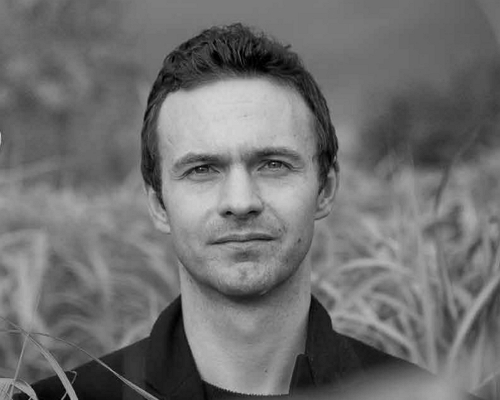
Dan Hayes
Celignis CEO And Founder
PhD (Analytical Chemistry)
Dreamer and achiever. Took Celignis from a concept in a research project to being the bioeconomy's premier provider of analytical and bioprocessing expertise.

Sajna KV
Bioanalysis Developer
PhD
Our Biomass Detective! Designs, tests, optimizes and validates robust analytical methods for our bioprocess development projects. Such bespoke analysis is key to developing an optimised bioprocess.

